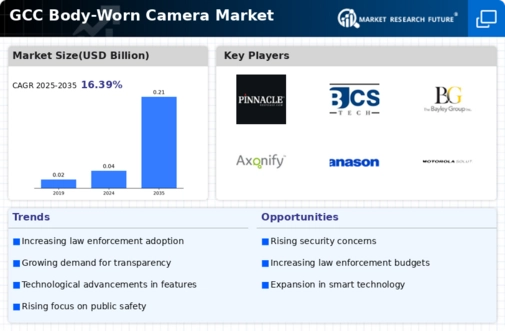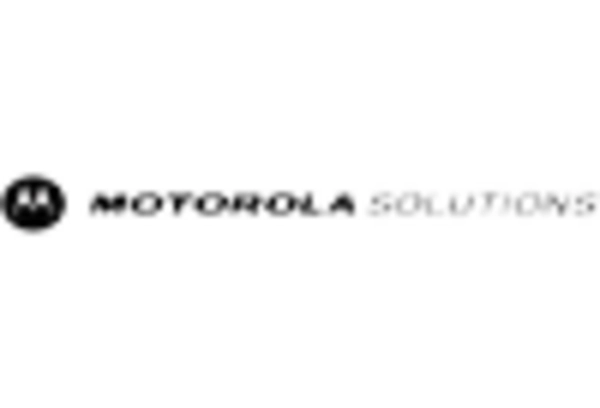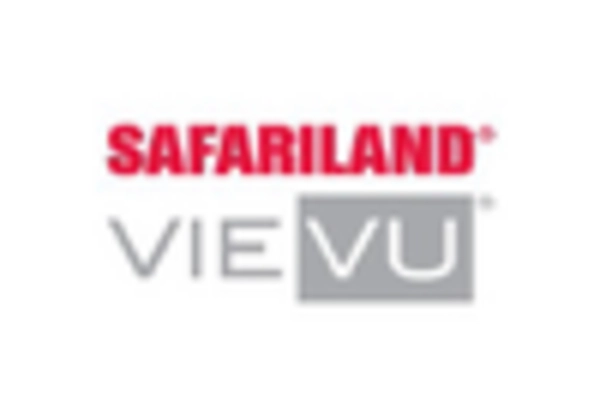Growing Focus on Public Safety
The body worn-camera market is significantly influenced by the increasing emphasis on public safety in the GCC region. Governments are prioritizing initiatives that enhance security measures, particularly in urban areas. The deployment of body worn cameras is viewed as a proactive approach to crime prevention and community safety. Recent statistics suggest that regions implementing body worn cameras have reported a reduction in complaints against police officers by up to 30%. This trend indicates a positive correlation between the use of body worn cameras and improved public safety outcomes, thereby driving growth in the body worn-camera market.
Supportive Government Policies
Supportive government policies are emerging as a crucial driver for the body worn-camera market. In the GCC, various governments are formulating regulations that mandate the use of body worn cameras in law enforcement agencies. These policies are designed to enhance accountability and transparency, thereby fostering public trust. For instance, recent legislative measures have been introduced to ensure that all police officers are equipped with body worn cameras during their duties. This regulatory framework is expected to propel the body worn-camera market, with estimates suggesting a potential market value increase of over $100 million in the next few years as compliance becomes widespread.
Increasing Demand for Accountability
The The body worn-camera market is experiencing a notable surge in demand for accountability across various sectors. This trend is particularly evident in law enforcement and security. This trend is driven by a growing public expectation for transparency and accountability in policing practices. In the GCC region, governments are increasingly adopting body worn cameras to enhance trust between law enforcement agencies and the communities they serve. Recent data indicates that the market is projected to grow at a CAGR of approximately 15% over the next five years, reflecting the rising need for evidence-based policing. The integration of body worn cameras into standard operating procedures is seen as a critical step towards improving operational efficiency and accountability in the body worn-camera market.
Rising Crime Rates and Security Concerns
The body worn-camera market is driven by rising crime rates and heightened security concerns in the GCC region. As urbanization continues to accelerate, so does the need for effective surveillance and crime deterrence measures. Body worn cameras are increasingly recognized as essential tools for law enforcement agencies to document incidents and gather evidence. The market is likely to expand as agencies invest in body worn cameras to address these challenges. Recent reports indicate that crime rates in major cities have prompted a 20% increase in budget allocations for security technologies, including body worn cameras, thereby reinforcing the growth trajectory of the body worn-camera market.
Technological Integration and Innovation
Technological advancements play a pivotal role in shaping the body worn-camera market. The integration of advanced features such as live streaming, facial recognition, and cloud storage solutions is enhancing the functionality of body worn cameras. In the GCC, the adoption of these technologies is expected to increase as agencies seek to leverage data analytics for improved decision-making. The market is witnessing innovations that not only improve video quality but also enhance battery life and storage capacity. As a result, the body worn-camera market is likely to see a compound annual growth rate (CAGR) of around 12% in the coming years, driven by the demand for more sophisticated and reliable devices.

















Leave a Comment